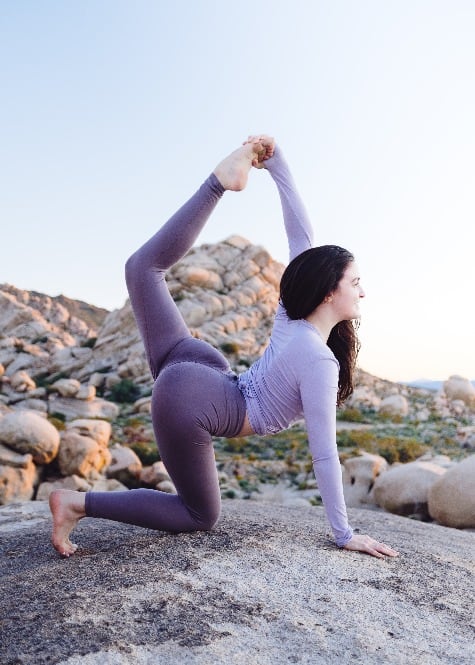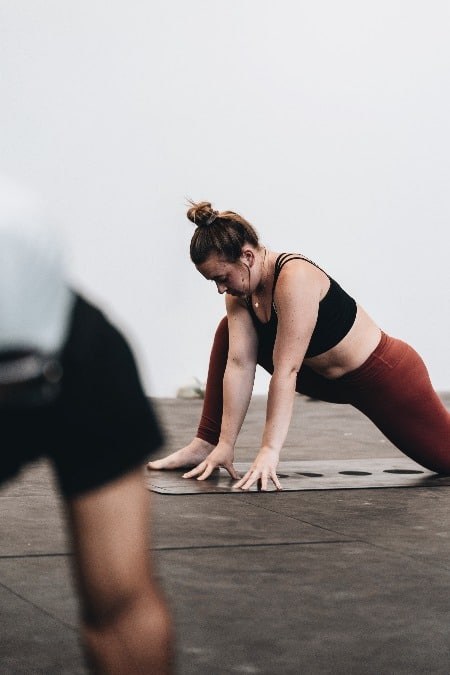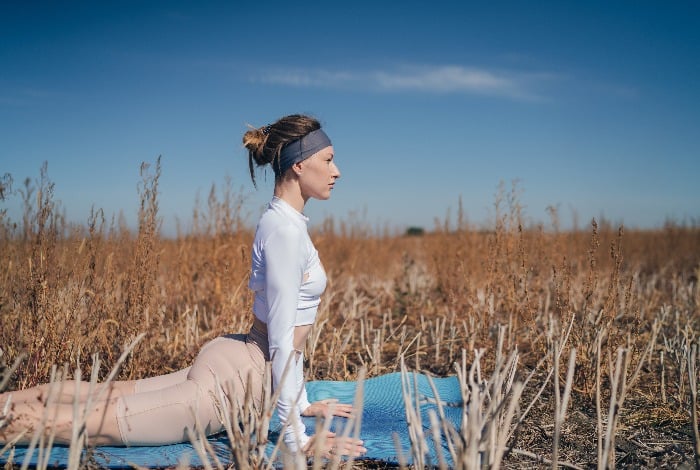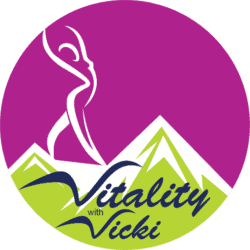 In this post, I want to discuss the importance of stretching in an exercise program. Stretching is the component of a program that is most often skipped or taken for granted. It’s also talked about the least so it’s easy to forget. But if you’re not stretching then you won’t have good flexibility which negatively affects your mobility. When your mobility suffers you’ll struggle through daily activities and be more prone to pain and injuries. All things that make life more difficult, and that’s not what we want.
In this post, I want to discuss the importance of stretching in an exercise program. Stretching is the component of a program that is most often skipped or taken for granted. It’s also talked about the least so it’s easy to forget. But if you’re not stretching then you won’t have good flexibility which negatively affects your mobility. When your mobility suffers you’ll struggle through daily activities and be more prone to pain and injuries. All things that make life more difficult, and that’s not what we want.
But let’s start from the beginning. Any good exercise program should involve three elements: cardio, strength training, and stretching. They’re all important for different reasons but stretching is often the most disregarded. Maybe because in a time crunch it seems like the least important since it doesn’t help you burn fat or gain muscle.
Related article: Why do cardio for exercise?
I think if people understood the importance of stretching and the many ways it can benefit them they might make the extra time for it. Even for people who are not engaging in a regular exercise program, flexibility is crucial. This is because too much sitting tightens muscles which then pull our skeletons out of proper alignment. This affects our posture and causes pain in our bodies.
So let’s start with this point since it can affect anyone, exerciser or not.
Better posture, less pain
Our muscles are what allow our bodies to move. And strong muscles help us to do all the things in life that we want and need to do. But when muscles shorten, either from inactivity or too much activity, they pull our bones out of their correct alignment which often leads to pain.

A good example of this is tight hip flexors which happen with too much sitting in our modern lives. It can also happen in runners or bicyclists because of the constant flexing of their hips during those activities. But all the sitting that most of us do shortens the hip flexors (the front of the hips) and lengthens the gluteus maximus (the butt muscle). This creates an imbalance in our posture.
The hip flexors are attached from our lower backs to our upper thigh or femur. They’re the muscles that allow our hips to flex, pulling our knees up toward the chest. When they shorten, and the glutes lengthen, they pull our upper pelvis into a forward position. That position can cause back pain (and other pain) over time.
Stretching can relieve that pain and bring our bodies back into the correct alignment. We all sit a lot more than we think, so even if you’re not an exerciser muscles still need to be stretched out daily. If you think this may be a problem for you try some of these stretches.
Related article: How to exercise at work (so you can do other things at home)!
Better range of motion
Stretching leads to better flexibility, which leads to a better range of motion for our joints, which makes our daily activities easier to accomplish. Range of motion refers to the complete spectrum of movement we have at each joint.
When muscles get tight they don’t allow the joints to move like they’re meant to. This is that “use it or lose it” idea. Once we quit moving in our full range of motion we end up losing the ability to move in all the ways our bodies are meant to. Then it becomes even harder to get that mobility back.
Many of us also experience arthritis as we’re aging and daily stretching can actually help ease that pain. Moving and stretching our muscles helps to get more blood flowing to our joints which warms up the synovial fluid surrounding the joints. That fluid gets cold and viscous (thick) due to inactivity making it harder to move without pain.
When our bodies are able to move freely we enjoy more comfort and independence in our lives. We all want to be able to bend over, get dressed, shower without help, or reach for things over our heads. Keeping our muscles stretched and flexible will help us with these daily functional movements.
Injury prevention
Finally, more flexibility will help us to prevent injury by keeping our muscles relaxed rather than tight either from overuse, or inactivity. When muscles are tight they just can’t move as easily. This is where the importance of stretching really makes a difference for all of us.
For example, if you have tight hamstrings (the backs of the upper thighs) and you bend over to pick something up, you could pull or strain that muscle. Or you just might not be able to bend over when needed! Stretching it on a regular basis would help keep that muscle flexible enough to withstand any sudden bending or lifting motions.
Here’s another example from my own life. Years ago I had a job where I stood all day long and I did a lot of walking in addition to that. But I rarely ever stretched out the muscles in my legs, or anywhere else for that matter. So one morning after waking I got out of bed and felt a terrible pain shoot through my heel!
This was my first experience with plantar fasciitis. I learned that I have very tight calf muscles and they need to be stretched regularly to keep them flexible and healthy. Since then I’ve done daily calf stretches to keep that muscle loose and the Achilles tendon flexible. A small price to pay to walk pain-free!
Types of stretching

Static stretching (as seen in the photo above) is the type of stretching most people are familiar with. This involves stretching your muscle and holding it in that position for 30 seconds or more. You’re better off doing this form of stretching after you’ve done your warm-up and full exercise routine.
Dynamic stretching is often used by athletes but is good for anyone. Dynamic means “moving” and refers to mimicking the type of movement you will be engaging in with that particular sport or activity. For example, a runner could swing their legs back and forth in order to warm up those muscles and hip joints prior to running.
Both types of stretching are important and helpful in different situations. I would recommend using them both in the ways I already explained; dynamic stretching should be part of your warm-up before a workout or activity while static stretching should come after your activity as a way to cool down and relax again.
I think of my static stretching after exercise as a form of meditation and relaxation because it feels so good!
Stretching for relaxation
And that leads me to my final point on the importance of stretching; it’s a great form of relaxation after a good workout or at the end of a long day of work! After working your muscles with exercise, or sitting all day at work, stretching will not only help you to feel physically better but also mentally better.
Lengthening our muscles relieves the tension in them from exercise or stress. And that’s exactly what we’re doing with stretching, lengthening those muscles so they can relax again.
I don’t need any studies to tell me that stretching makes me feel better after a workout or a day of little activity. I know it does through experience. So my advice is to experiment a little yourself. Try stretching every day for a month and see what kind of difference it could make in your life.
My final thoughts
On a daily basis, some of our muscles get overused while some get underused. Some get stretched out more often while others become shorter over time. Keeping them in balance will help us live healthier and more comfortable lives.
Remember the importance of stretching as a part of every exercise program. Stretching helps us to…
-
- have better posture and less pain
- have better range of motion to accomplish our daily activities
- alleviate arthritis pain
- prevent injuries
- relax and feel better both physically and mentally
But even if you don’t exercise, it’s important to do stretching to keep your muscles flexible, especially as you’re aging. Too much sitting, too much standing, and even too much lying down all have negative effects on our bodies.
Our bodies are meant to move, but our lives are much different today than through most of human history. We don’t have to exert nearly the physical effort that we once did to get through our days. And unfortunately, our bodies are paying for it.
Take care of your body and make it a priority. Rehabbing from an injury is much harder than preventing it in the first place! Just keep in mind that everything in life is hard before it’s easy. Practice and discipline make things easy over time. And our bodies are worth the effort!
How do you get your body stretched out on a regular basis or is this something you’ve been neglecting? Let me know in the comments below.

